Read an excerpt of this month’s MEGA Man cover star, Leeroy New.
hat comes into mind when you hear the name Leeroy New? Young folks surely think of his otherworldly installation projects and wearable art pieces that have made him famous the world over. On the other hand, there is no doubt that fashion lovers quickly remember Lady Gaga, who wore New’s muscle dress in her Marry the Night cover art. It’s easy to associate the visual artist with fashion, theatrics, and costuming, especially when his Instagram feed is filled with vibrant, outlandish pieces that look like they came straight out of the mind of a storytelling genius.
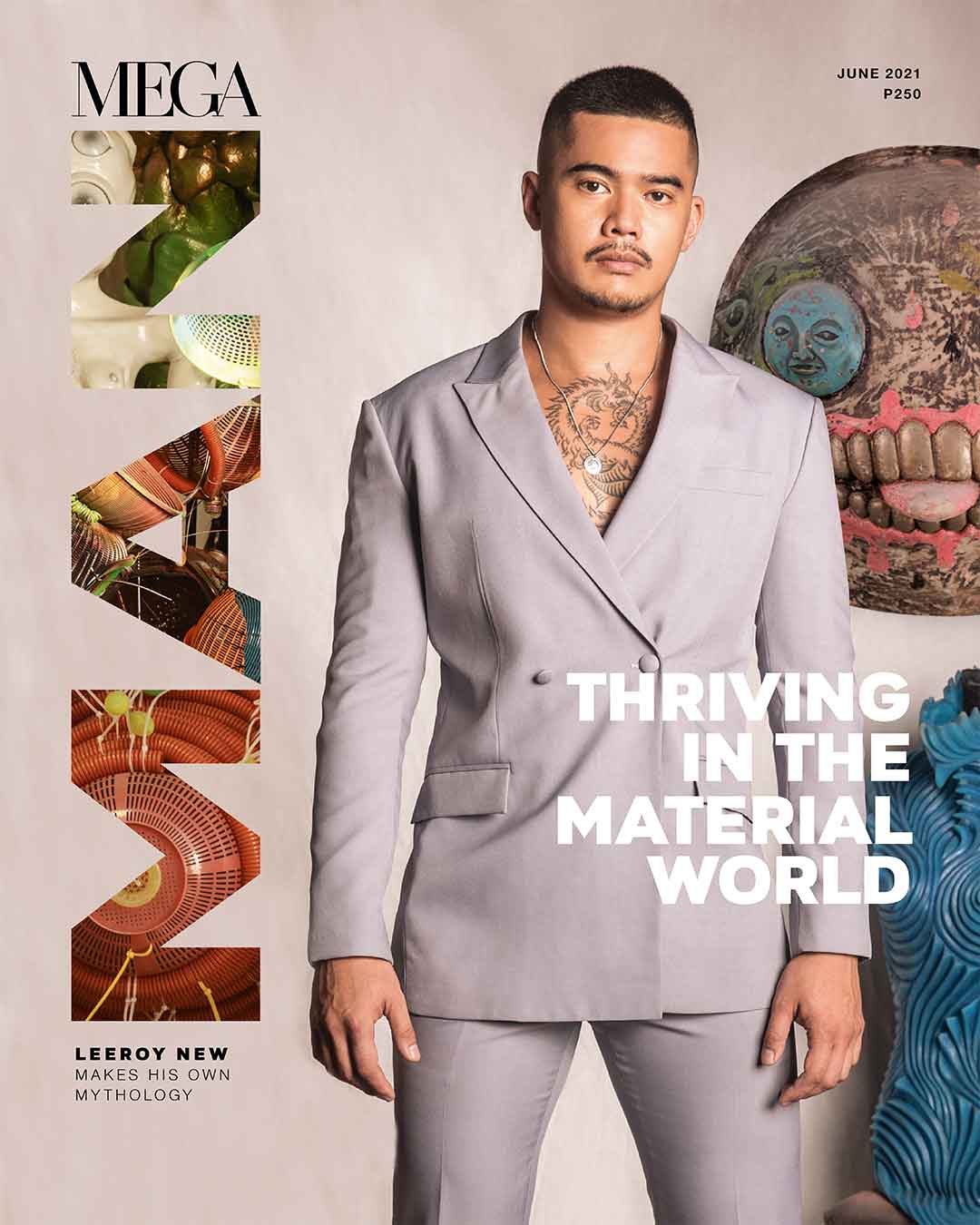
On the other hand, the general public might think of the young man’s collaborative efforts with Philippine urban planners in modifying public spaces. This is mostly what New does, and he admits that being able to actually contribute to structures is his own little way of proactively changing society in a cultural level. Just recently, he could be spotted painting sea creatures along the banks of the Pasig River, as part of a beautification project by the British Council and the MMDA.
Whatever it is you might think of when recalling Leeroy New, there is one thing for certain: his resume speaks for itself. Just in his mid-30s, the artist has proven to be one of the most provocative and innovative voices in the local (and perhaps global) art scene. He is shattering misconceptions on what can and should be perceived as art, by simply producing ballsy, unapologetic pieces that have something to say. Who knew that a shy boy from General Santos City would be making such a splash? Surely, Leeroy New did.
IMAGINATION OPENS DOORS
“I’m from a very conservative upbringing,” began Leeroy New, as he looked back on his childhood in General Santos City, Mindanao. “I was raised a shy boy, and we were never encouraged to talk or have an opinion, because that was tantamount to being rude.” He found art as a way of expression, sharing that ever since he could remember, he was always scribbling on paper, and sometimes, even on the walls of their home. Growing up in a city far from bustling Manila, New explains that he had very limited resources to study art. Rather than art books or the internet (which was not a “thing” back then), he looked towards collecting cards, comic books, movies, and Philippine folklore (aswang stories as told by his family) for inspiration.
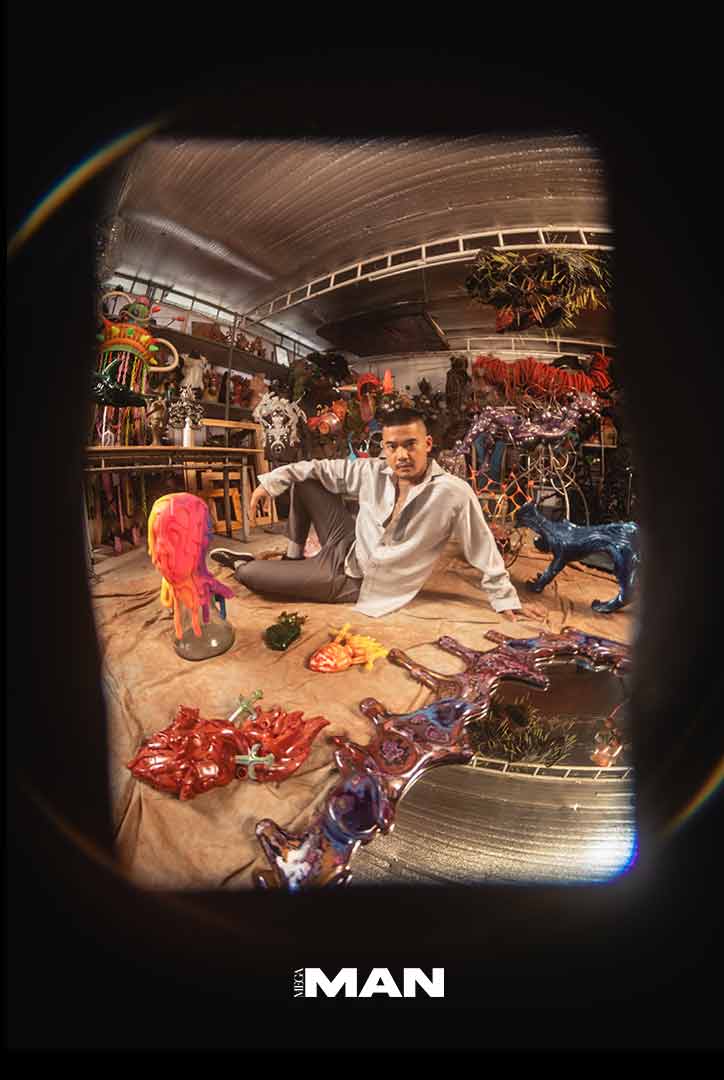
“Some kids in our school were playing Magic Cards, and I remember just watching them play and being so fixated on the images,” he remembers. “Each card depicted different scenes from sci-fi and fantasy. I eventually learned the card game just to look at the images. I memorized every picture, and who the illustrators were. Those were my art books, because local libraries were very limited.” The interest in the strange and whimsical led to a love for horror films.
New explains how he was one of those kids who looked forward to actually seeing the monster revealed on the big screen. How did they imagine it this time? he would think to himself. While other children hid under the bedsheets, Leeroy New was anticipating to see movie magic on screen—even if the images were born from nightmares! He wasn’t scared. On the contrary, seeing these scary creatures only stimulated his young, artistic mind.
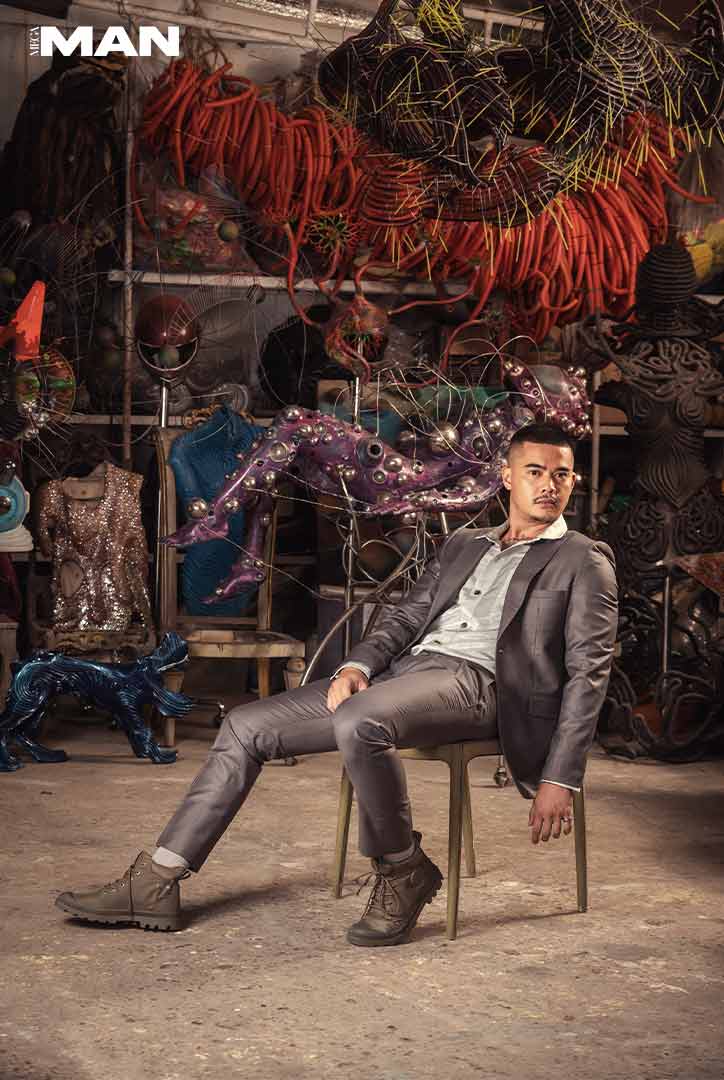
The art references from his childhood are still very prevalent in his work today. The out-of-this-world, surreal feeling of each piece he produces very much has a childlike, nightmarish quality to it. Yet, they are undoubtedly made by a seasoned artist of great skill—one whose influences needed to travel a few decades to be fully realized and embraced. Today, New considers himself a world builder. “I’m creating my own mythology, informed by my personal history and in [response] to the social and political climate of the time,” he shares. “I made the most out of [my childhood]. It’s all I can do given the circumstances. And as you can see, it’s still a principle with my work—making the most with what you get. It’s like how I use all these [different] materials I can get my hands on.”
THE BLESSED SOIL OF MT. MAKILING
A large part of New’s identity as an artist is his use of avant-garde or untraditional materials for his work. For instance, some of his past sculptural pieces have used old toy parts from Divisoria, re-used plastic bottles, and even shuttlecocks used in badminton. But when these trivial everyday items find their way into Leeroy New’s hands, they transform into something strange and wonderful. When asked how his art became what it is today, he acknowledged his education at the Philippine High School for the Arts in Mt. Makiling, Los Baños. “School had a big role in it. I went to an art school. I took the test and luckily, I got in. It was a scholarship, so it was a big deal for kids who wanted to study art and be supported.”
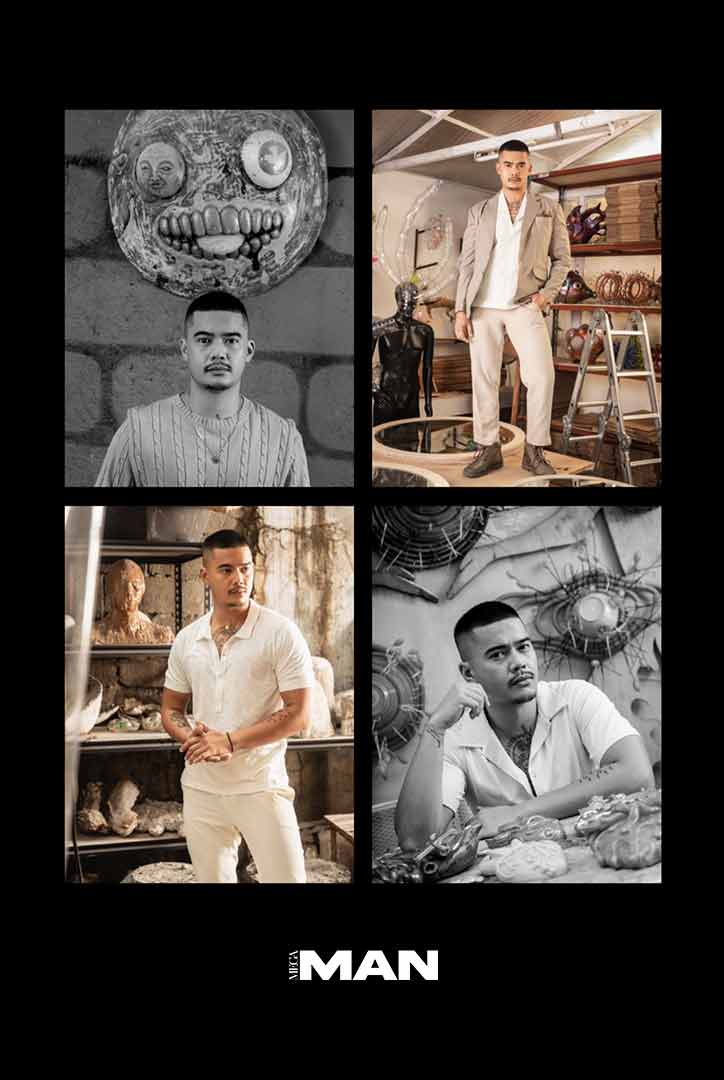
On his first day at the school, he was culture shocked. “The first time I stepped onto Makiling, I was shocked to see boys with long hair,” he said. “I was in shock because it made me realize that I came from a very conservative place.” School eventually became a positive experience for Leeroy New, who shares that he still holds what he learned there close to his heart. “I had mentors back in high school that really broke down my pre-conception of what art was. [I remember] my teacher Roberto Feleo would say to [his students], “Before we are painters and sculptors, we are weavers, potters and carvers.” Simple statements like that kind of broke down the western cannon of art as the only cannon.” Because of this new mindset, New decided he would present his art in more adventurous, unique places, such as desert lands, over rocky waters, and other public spaces. “The danger is thinking that one system (the profit driven or auction-based systems) are the only credible systems to validate art,” he shares.
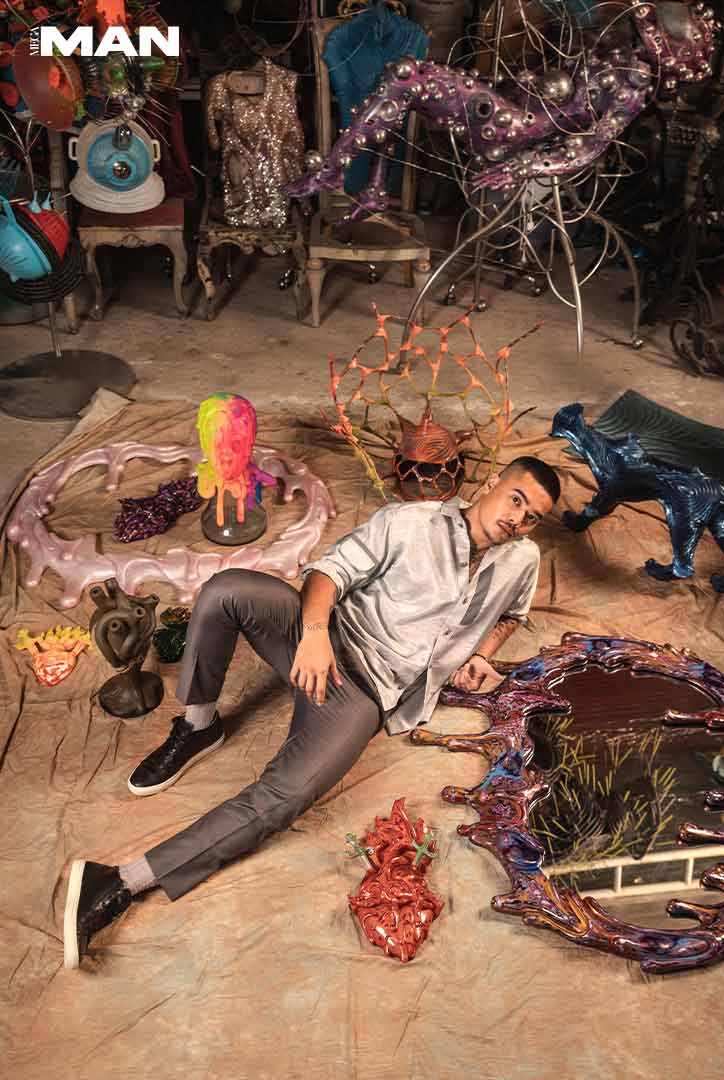
Finally, The Philippine High School for the Arts gave New the confidence to follow his dreams. He says that as a fresh graduate of an arts school, it was very important to have a little bit of “positive arrogance,” which helped him believe that what he was doing was worthwhile. “When I was an art student, there wasn’t many existing models of the type of art I did in the Philippines,” he began. “But I knew somehow, that I needed to explore this kind of art—whether it was differentiating myself from the sea of other works, or to cultivate another way to present art.”
He’s been pushing the envelope ever since.
Related: Bringing Filipino food and style to the streets of New York City
Read more about Leeroy New in MEGA Man’s June 2021 issue available on Readly, Magzter, Press Reader and Zinio
Photography FLOYD JHOCSON
Text: CHINO HERNANDEZ
Art Direction: MARC PAGDILAO
Grooming: CATS DEL ROSARIO
Styling: GEE JOCSON
Sittings editor: PEEWEE REYES-ISIDRO







